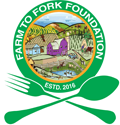Assessment of Morpho-physiological and Biochemical Profiles of Stevia rebaudiana Bertoni in Different Climatic Regions of Iran
DOI:
https://doi.org/10.5455/faa.172011Keywords:
Biochemical characteristics, Climatic conditions, Leaf yield, Physiological traits, Steviol glycosidesAbstract
Cultivating stevia is imperative because it is a natural sweetener, providing a healthier and low- calorie substitute for sugar. A comprehensive study was undertaken in 2021-2022, employing a randomized complete block design with three replicates, to evaluate the growth, yield, physiological, and biochemical characteristics of stevia across diverse Iranian climates (Arak, Rasht, Gorgan, Hamedan, Isfahan, Kermanshah, Shiraz, Tabriz, Tehran, and Urmia). The findings unveiled notable variations in growth, yield, physiological, biochemical traits, and steviol glycoside content among different cultivation sites. Notably, Shiraz, Isfahan, Tehran, and Arak exhibited the highest leaf yield, recording values of 119.89, 91.25, 97.07, and 86.24 g m-2, respectively. Conversely, Rasht and Gorgan showcased the lowest growth and yield parameters. Of particular interest, Shiraz samples displayed the highest photosynthetic pigment content (chlorophyll) and the lowest proline levels. Rasht samples demonstrated the highest average content of rebaudioside-A, stevioside, and total steviol glycosides (3.01%, 8.66%, and 11.67%, respectively). Furthermore, Shiraz samples yielded the most steviol glycosides at 122.6 mg m-2. Correlation analysis between climatic data and yield, along with biochemical traits, indicated positive associations of average temperature, rainfall, and relative humidity with leaf yield and steviol glycoside content. In contrast, altitude exhibited a negative correlation with steviol glycoside content. In conclusion, Shiraz is recommended for stevia cultivation for optimal growth and leaf yield, while Rasht and Gorgan are preferable for steviol glycoside production.
Downloads
Downloads
Published
How to Cite
Issue
Section
License
Copyright (c) 2024 By the Author(s)

This work is licensed under a Creative Commons Attribution-NonCommercial 4.0 International License.




















